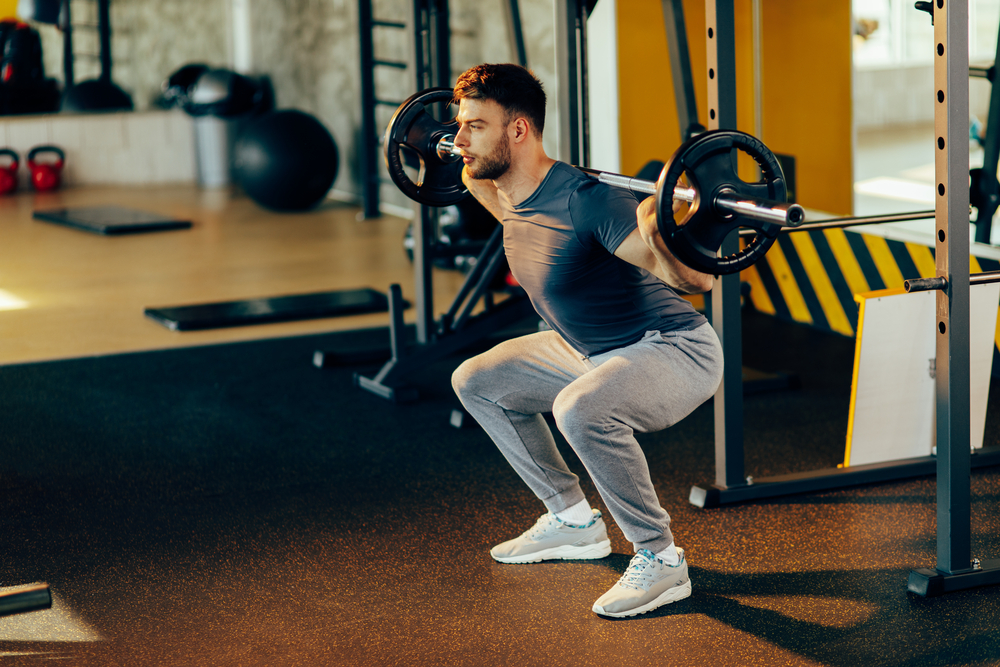If you are looking to strengthen your hamstrings, quads, and glutes, then you have to do back squats. It is mostly known to be one of the best exercises because it is capable of building your power, size, and strength. With that in mind, you need to know that it is an exercise that is often butchered. It is not a normal occurrence to enter into a gym and find that people are performing squats with perfect form. This is mostly found when people train alone without a strength instructor to assist.
If you don’t properly perform a back squat, it can be very dangerous and also make you more likely to sustain a back or knee injury. On the other hand, if you do it properly, it is a very efficient exercise that is certain to make you better as an athlete.
Mistakes you make while doing back squats
These are the typical mistakes people make when trying to do the back squat, so if you are making any of these mistakes, you are not doing it right.
Forgetting your upper body and core
If you fail to create enough tension by squeezing on your core muscles and upper back, you will not only reduce the mass of weight you can lift; you will also mess up your form and increase your risk of sustaining an injury. Ensure that you do not forget to keep your core tight and pull the bar into your back while you are performing this exercise.
You raise your heels off the ground
When some lifters are lowering into the squat, they normally make the mistake of coming up onto their heels. This mostly happens because these lifters don’t hinge at their hips, and they shoot their knees forward when lowering into the squat. Making this mistake would put your knees in a risky position to lift heavier weight and also reduce the amount of weight you can carry.
Your knees collapse inward
You will need to put in more work if your knees collapse inward. This is known as valgus collapse, and it is responsible for raising your risk of injury and also putting a lot of strain on the knees. As long as you make this mistake when squatting, during sports, you are likely to raise your risk for an ACL injury when you land from a jump or changing and cutting directions. If you want to get rid of this issue, you can imagine that you are pushing your knees outward while performing squats. If you want to reinforce the ideal position, you can wrap a light resistance band around your leg above your knees.
Making the squat into a good morning
If you notice that your knees are straight and your hips are straightening too, you have turned the exercise, which is known as Good morning, and this would severely stress your spine if you don’t pay attention. It is normal for it to occur occasionally if you are doing heavy reps, but ensure you don’t let it happen too frequently.
How to properly perform back squats

If you want to perform back squats the right way, then these are the steps you should follow;
First, you start by positioning the bar so that you can get beneath it, then you get into your stance and lift the bar smoothly while ensuring that when you lift, you don’t end up on your toes. Find your perfect setup by doing some reps with a barbell with no weight.
- Next, you have to ensure that the bar is evenly positioned as most people make the mistake of setting it unevenly. They usually get beneath it and make an approximation of their shoulder and hand positions. If you make even the littlest of mistake when trying to position the bar, it could cause some significant problems. So, to do this right, the bar has to be positioned at your front while ensuring that your hands are in a comfortable position. Typically, this position is close to your position, where you don’t feel overly cramped but natural.
- Next is to start creating tension and getting beneath the bar. Grab and move beneath the bar while making sure you hold it tightly. Squeeze your lats; instead of just allowing the bar to sit on your back, pull it into your back. Ensure that the tension is maintained all through the exercise.
- Next, mount your ideal squat stance, breathe in deeply while still maintaining the tension. Then, lift the bar from the rack by standing upright before positioning yourself for the squats by taking some steps backward. Ensure that you are not close to the rack so that when you are squatting, you won’t clash with the clips. Moving away from the rack would surely mess up your stance, so you have to mount the stance again.
- Finally, to start squatting properly, you have to bend your hips and knees while making sure that your back is flat and your core is tight. When lowering, feel as if your butt is being pulled to meet the heels and that you are using your feet to spread the ground apart. Your thighs should be parallel with the floor before you stop lowering.
Finding the ideal back squat stance
The most traditional squat stance that is widely taught is to stand with your feet at a slightly outward angle and shoulder-width apart. While it is an effective stance for a lot of people, it doesn’t account for the different anatomy structure of people. Your perfect squat stance should be dictated by the structure of your hips. You might find it easier to perform squats if you use a wide stance, but it might be more painful and challenging for another person.
This is why it has been established what there is no particular stance that you need to utilize to perform your squats. Instead, it would be best if you discovered the perfect stance that makes you have a painless squatting session with a suitable form. A very common and simple way to determine your perfect squat position is to perform a couple of squat jumps while taking note of your position when you land. This position will most likely be the best starting position when looking for the ideal stance.
Low bar vs. High bar
Low Bar
The low bar squat is a variation that you don’t mostly see being performed while walking past the gym. If you want to perform this, the bar should sit about 3 inches under where you normally position the high bar, in the middle of your upper traps and rear delts. You are creating a shelf with your muscles so that the bar can sit.
This position changes the technique of squats by altering the center of gravity of this exercise. Your torso needs to be propped forward at an angle of 45 degrees if you want to keep the bar over your center of mass. Ensure that you do not maintain an upright position as this is to be used in the high bar version. To perform the low bar back squat variation, you will need to have a great hip hinge technique, which means that your waist needs to be able to bend through a variety of movements.
This position ensures that you can lift weight more than other variations because you have your glutes doing almost all the work, and that is why it is a variation that is mostly preferred by powerlifters. With that in mind, if you don’t have mobility, this move can prove difficult to handle for your shoulders.
If you can comfortably carry out this version of the exercise, then you can go ahead. However, the low bar position is often preferred by tall athletes that have long femurs.
High Bar
In the high bar back squat version, you will have the barbell sitting on the collar of your shirt and across your upper traps on the back of your shoulders. This is a position that ensures you keep an upright torso. You will not be as bent over like when doing the low bar back squat, or as upright like when doing the front squat. Using this technique, you will be able to share the work between your quads and glutes. Also, when you use this position, you will be able to squat a heavier weight, but not as heavy as when you use the low bar back squat. Thanks to the upright torso position that this technique uses, you will still be able to perform it even if your hip hinge technique is good but not perfect. You will place a lot of stress on your lower back if you have poor technique.
Conclusion

Doing back squats is an amazing exercise to perform as it comes with a lot of benefits. Its benefits include improving your muscle strength, burning fat and calories, controlling diabetes, increasing circulation, decreasing cellulite, and improving your posture and flexibility. This is why it is referred to as the king of all exercises.



